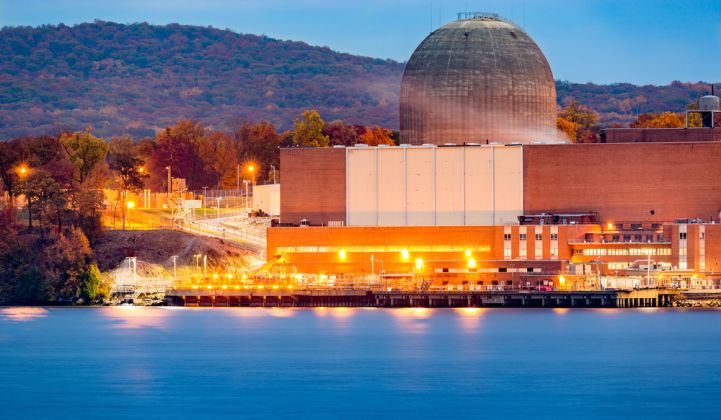Bills working through both chambers of the Minnesota legislature would grant the state’s largest utility, Xcel Energy, approval for nuclear facility cost recovery before the money is spent. Currently, the utility commission uses rate cases to analyze returns after the utility shells out.
Last week, the Senate version passed out of committee.
The divisions the bills have created within the state — with the utility commission, some lawmakers, clean energy advocates and the executive branch on one side, and Xcel and other members of the legislature on the other — echo wider debates about large nuclear power plants in the U.S., and who should pay for them.
South Carolina is still negotiating the fallout from the cancellation of two new reactors at its VC Summer Plant. Ratepayers there have already paid billions of dollars for a project that will never be completed. In March, Georgia regulators approved a merger of Scana Corporation and Dominion Energy, which may provide some relief for ratepayers. But the deal still needs federal approval as well as the OK of South Carolina regulators and Scana shareholders. Lawmakers in the state are also still mulling how much more ratepayers should pay for the failed project.
Meanwhile, progress at the controversial Vogtle Nuclear Plant in Georgia continues trudging along. Last week Georgia Power announced the placement of the 306-ton reactor vessel at the site.
In the Land of 10,000 Lakes, Xcel would propose its expected costs for approval from the utility commission. The pre-approved ratepayer money would support three Xcel reactors through the expiration of their licenses in 2030, 2033 and 2034, respectively. According to the utility, the two plants where the reactors are located need about $1.42 billion to continue functioning through those years.
Bill Grant, deputy commissioner of energy and telecommunications for the state Commerce Department, said the bill essentially gives Xcel a “blank check.”
Xcel argues supporting nuclear will help the utility reach its carbon-free goals.
“The legislation is really an effort to advance the goal of carbon reduction at an affordable price,” Chris Clark, Xcel’s Minnesota president, told the state's Star Tribune. It’s targeting 85 percent carbon-free sources by 2030. Sixty percent of that would come from renewable energy, with nuclear power providing the remaining portion.
Another nuclear battle is playing out in New York, with competitive power producers such as NRG Energy and Dynegy challenging the state’s use of zero energy credits, footed by ratepayers, for nuclear power plants. The plaintiffs say the credit’s use interrupts competition. Lower courts have ruled in favor of the state in both New York and in a similar case in Illinois.
While varied in their policy implications, all of these state cases have spurred debates about whether large-scale nuclear — which has proven itself to be very costly — should receive monetary support or subsidies, and in what form. In the first days of 2018 the Federal Energy Regulatory Commission killed a proposal from Energy Secretary Rick Perry to buoy nuclear (and coal) power plants. Another resilience proceeding is now underway at FERC to assess what benefit, if any, these plants should receive.
A bankruptcy declaration from FirstEnergy days after the company requested a bailout for its coal and nuclear plants from the Department of Energy indicates the economics are not getting better for these plants.
While the New York and Illinois cases wend their way through the courts and FERC considers its next move, the debate over nuclear support in Minnesota may end more quickly: at Governor Mark Dayton’s desk. He has said he won’t sign the bill because it undermines the authority of the PUC.
“These end runs to the legislature to try to give special interests what they want violates the whole purpose of the Public Utilities Commission,” the governor said.




